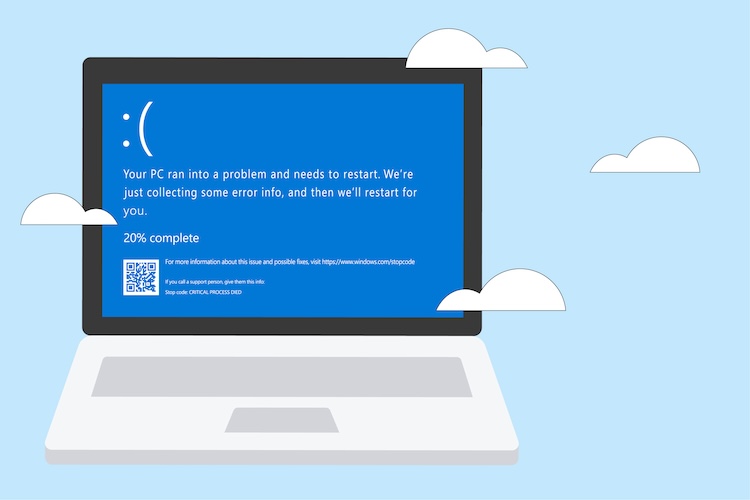Lessons from the CrowdStrike Outage: What Businesses Need to Know
Even the top players in cybersecurity can encounter unexpected bumps in today’s complex environment. Recently, a major event rocked the industry: the CrowdStrike outage.
CrowdStrike, a big name in cybersecurity, faced a massive disruption in their Falcon Sensor software, causing millions of Windows devices around the globe to crash. This left many businesses in a panic, searching for quick fixes and underscoring just how important strong cybersecurity measures are.
This blog post breaks down what went wrong during the CrowdStrike outage, how it affected businesses, and the key takeaways. Whether you’re a business owner, IT pro, or just curious about cybersecurity, getting the scoop on this event will help you be better prepared for the future.
What happened with CrowdStrike?
So, what exactly went down with the CrowdStrike outage? Let’s start with a quick summary.
On July 19, 2024, CrowdStrike pushed an update for their Falcon Sensor software, known as “Channel File 291.” This update was intended to improve security by adding new detection capabilities. However, things didn’t go as planned. A glitch in the update led to a massive failure, causing millions of Windows devices to crash with the dreaded blue screen of death.
The impact was immediate and widespread. Businesses of all sizes found themselves unable to access critical systems and data. From airlines to local businesses, the outages caused major disruptions. For instance, Delta Air Lines reported that the incident resulted in thousands of canceled flights and a staggering $500 million in lost revenue and extra costs.
Although IT teams scrambled to find quick fixes, the scale of the problem meant that many organizations had to deal with significant downtime. Users were left wondering how such a trusted cybersecurity company could face such a colossal failure.
A technical breakdown of the outage
To understand what led to the CrowdStrike outage, we first must explore the technical details. Ultimately, the issue stemmed from the “Channel File 291” update, which was designed to enhance security by improving visibility into and detection of sophisticated attack techniques, particularly those exploiting Windows interprocess communication (IPC) mechanisms.
Root cause analysis
The root cause of the outage was a “content validation issue.” Essentially, there was a mismatch between the number of inputs expected by the software’s Content Validator and those provided by the Content Interpreter.
Here’s a simplified breakdown of the problem:
- 21 vs. 20 inputs: The new update introduced a Template Type that required 21 inputs. However, the Content Interpreter only expected 20 inputs. This mismatch wasn’t caught during testing because wildcard matching criteria were used, which masked the issue.
- Out-of-bounds memory read: When the system attempted to process the 21st input, it resulted in an out-of-bounds memory read. This is a fancy way of saying that the software tried to access data outside its allocated memory, leading to a crash.
Testing gaps
Despite multiple layers of testing, the problem wasn’t identified. The testing process used wildcard matching for the 21st input, which meant the mismatch wasn’t flagged. It wasn’t until the update was deployed and started affecting systems that the issue became apparent.
Why the CrowdStrike outage matters
The glitch had a massive impact because CrowdStrike’s Falcon Sensor operates at a very low level within the system, integrating deeply to provide comprehensive security. When this critical component failed, it took down entire systems, leading to widespread blue screens and operational chaos.
Impact of the CrowdStrike outage on businesses
The CrowdStrike outage caused technical headaches and massive disruptions for businesses of all sizes. When the outage hit, IT teams everywhere were in panic mode. They had to quickly figure out what went wrong and how to fix it. But the sheer scale of the problem meant that many organizations faced significant downtime before things could be restored.
One of the biggest challenges was that fixing the issue required manual intervention. IT staff had to physically access each affected machine to roll back the faulty update. This was a logistical nightmare, especially for large organizations with thousands of devices.
Many businesses found their resources stretched thin. With limited IT staff and a huge number of machines to fix, getting everything back online was a slow and painful process. This was especially tough for smaller businesses and those with less mature IT infrastructures.
Here’s a closer look at how the outage affected some specific industries:
Airlines
The outage hit the airline industry hard. Numerous flights were delayed or canceled, leaving travelers stranded and scrambling for alternate travel options. Many passengers ended up spending hundreds of dollars on unexpected lodging, meals, and alternative travel arrangements. Some even missed work or suffered health problems from having to sleep on airport floors. This led to a proposed class action lawsuit against CrowdStrike, filed by frustrated travelers seeking compensatory and punitive damages.
Local businesses
Smaller businesses weren’t spared either. Many found their systems down, unable to access critical data or run essential operations. For example, some businesses couldn’t process transactions, leaving customers frustrated and operations at a standstill.
Healthcare providers
The outage was particularly alarming in the healthcare sector. Some providers experienced system crashes that affected patient scheduling and medical record access. This not only disrupted daily operations but also posed serious risks to patient care.
Broader implications for cybersecurity
The CrowdStrike outage had far-reaching consequences, not just for the businesses directly affected but for the entire cybersecurity industry. Let’s explore the broader implications and what this incident means for the future of cybersecurity.
Regulatory impact
One of the major discussions sparked by this outage is the role of regulations, particularly those in the EU that require deeper hooks into operating systems for security software. Microsoft has pointed to these regulations as a contributing factor to the outage, suggesting that they limit the ability to maintain system integrity. This incident may prompt regulators to reevaluate these requirements and find a balance that ensures both security and stability.
Vendor trust
The outage also highlighted the importance of trust in cybersecurity vendors. Businesses rely heavily on these vendors to protect their systems and data. When a trusted vendor like CrowdStrike faces such a significant failure, it shakes confidence across the board. Companies may start to question their reliance on single vendors and look for ways to diversify their cybersecurity measures.
Reputational damage
For CrowdStrike, the outage caused significant reputational damage. It’s likely that potential and existing customers will think twice before trusting them with their critical security needs. This could lead to a shift in the market as competitors vie to take advantage of CrowdStrike’s weakened position.
Market response
The market response was switch, with competitors seeing a surge in interest as businesses looked for alternatives. Companies like Sophos and SentinelOne, which offer similar security solutions, may benefit from CrowdStrike’s missteps. This could lead to a reshuffling in market share within the cybersecurity industry.
The financial impact of the outage was also evident in the stock market, where CrowdStrike’s stock took a hit while competitors saw gains. This kind of market volatility underscores the high stakes involved in cybersecurity and the potential financial fallout from significant operational failures.
Lessons learned to prepare for future incidents
The CrowdStrike outage is a wake-up call for the cybersecurity industry. Here are some key takeaways and steps businesses can take to better prepare for future incidents:
Risk management and incident response
The outage highlights the need for strong risk management and incident response plans. Businesses must be ready for the possibility that their security tools might fail and have contingency plans in place to minimize downtime and damage.
Developing comprehensive business continuity plans that account for software failures is critical. This includes having backup systems, alternative communication methods, and predefined steps for restoring operations quickly.
Diversity in security tools
There’s an ongoing debate about whether to consolidate all security tools under one vendor or diversify. This incident strongly supports diversification. Relying on a single vendor can create a single point of failure, as seen with CrowdStrike. By using multiple vendors, businesses can spread the risk and reduce the impact of any one tool failing.
Regular updates and controlled rollouts
The importance of controlled and phased rollouts for updates cannot be overstated. CrowdStrike’s experience shows that even well-established companies can miss critical issues during testing. A more cautious approach to rolling out updates can help catch problems before they affect a large number of systems.
Increasing test coverage, especially for edge cases and non-wildcard scenarios, can help identify potential issues before they widespread problems. This includes rigorous validation and runtime checks to ensure updates don’t cause unexpected crashes.
Increased control and validation
Implementing new checks to ensure input matches expectations and adding runtime-bound checks to prevent memory access issues are essential steps. These measures can help avoid the kind of out-of-bounds errors that led to the CrowdStrike outage.
Industry collaboration
CrowdStrike’s plan to work more closely with Microsoft and engage independent third-party vendors for code reviews is a positive step. Collaboration within the industry can help identify and address vulnerabilities more effectively, improving overall security. Businesses should also consider engaging with third-party experts to review their own security practices and ensure they meet industry standards.
User awareness
Educating users and businesses on how to handle similar incidents in the future is vital. This includes regular training on incident response procedures and best practices for maintaining security in the face of software failures.
How FullScope IT can help
The CrowdStrike outage underscores the importance of having a robust, multi-layered cybersecurity strategy. At FullScope IT, we’ve seen firsthand the impact that such disruptions can have on businesses. Our team is dedicated to helping you navigate these challenges and build resilience against similar incidents.
It’s clear that having a diversified approach to cybersecurity tools is crucial. Relying on a single vendor can create a single point of failure. We help businesses implement a multi-vendor strategy, ensuring that if one tool fails, others can step in to maintain security.
We also emphasize the importance of regular updates and controlled rollouts. By carefully managing and testing updates, we help prevent the kind of widespread issues seen with the CrowdStrike incident. Our approach includes rigorous validation checks and phased deployment to catch potential problems early.
FullScope IT provides the expertise and support needed to develop strong risk management and incident response plans. We conduct regular training and simulations to ensure your team is prepared for any situation, helping you minimize downtime and quickly recover from disruptions.
By partnering with FullScope IT, you can stay ahead of cybersecurity threats and ensure your business is well-protected and resilient in the face of unexpected challenges.
Contact FullScope IT today to learn more about how we can protect your business from similar incidents in the future.










